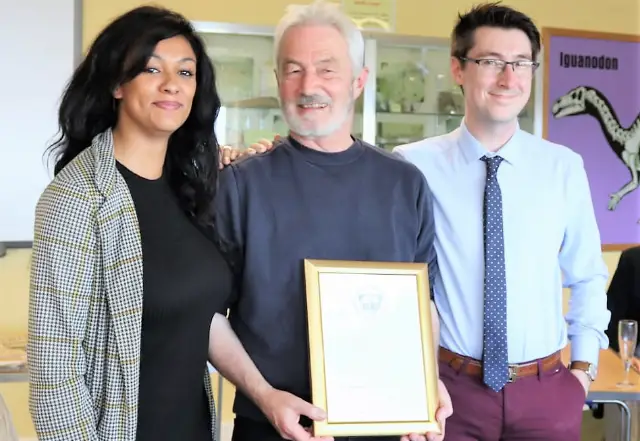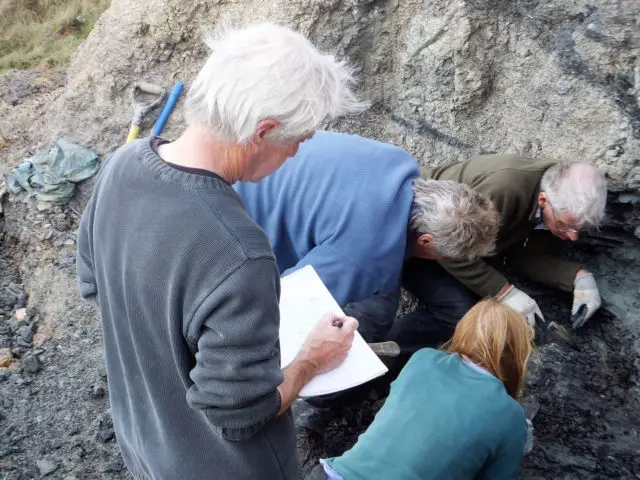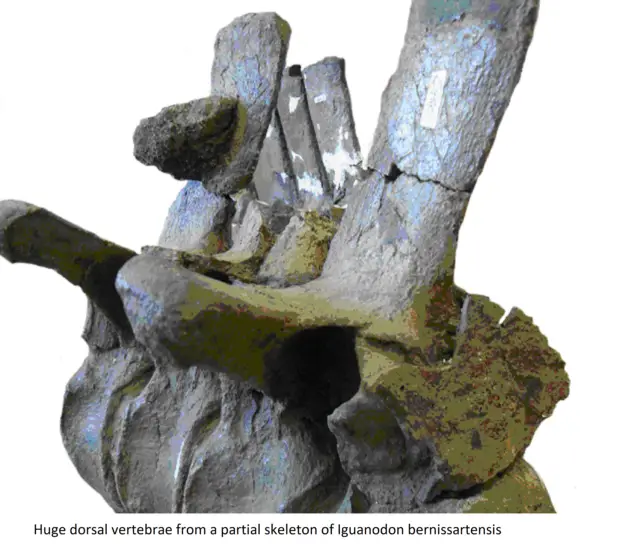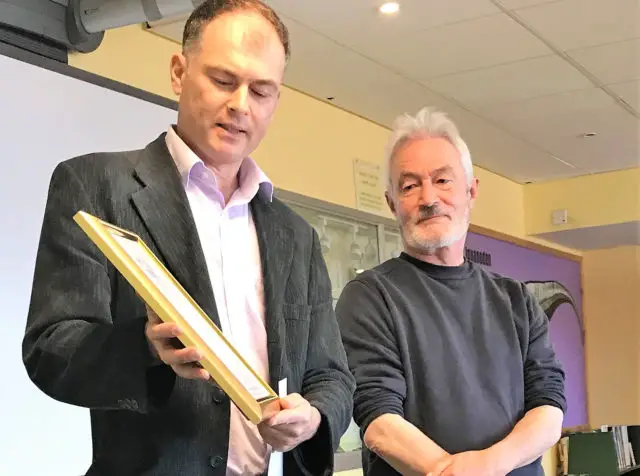The council share this latest news. Ed
The Isle of Wight’s very own ‘dinosaur hunter’, Nick Chase, has been given a prestigious international award by the Palaeontological Association.
Nick has been a familiar figure on the beaches of the south coast of the Island three decades.
He has braved bad weather, heavy seas and thick mud, on a daily basis, to search for dinosaur bones and other fossils washed out from the cliffs. The results have been spectacular and have made Nick the country’s leading discoverer of British dinosaur material.
Mary Anning Award
To mark this achievement he was presented with the prestigious Mary Anning Award by the Palaeontological Association on Saturday 20 October. Vice president of the association, Professor Richard Twitchett of the Natural History Museum, London, made the presentation.
The award, named after the famous Victorian fossil hunter from the Jurassic Coast is given by the association to amateurs who have made a remarkable contribution to the science. People are nominated from around the world making it a prize of international standing.
Lockwood: “Modern-day Mary Anning”
Dr Jeremy Lockwood, chair of the Friends of Dinosaur Isle, said:
“It is so fitting that Nick has received this award, because although he’s a man and doesn’t have a little dog, he is in many other ways just like a modern-day Mary Anning, with a remarkable gift for seeking out dinosaurs.
“Nick is also such a generous man, he not only donates wonderful fossils to museums but always has time to talk to people on the beach and encourage interested children by giving them pieces of dinosaur bone.”
The country’s most prolific discoverer of British dinosaurs
Over the years Nick has chalked up an impressive list of finds making him the country’s most prolific discoverer of British dinosaurs.
These include several almost complete dinosaur skeletons which have generated huge interest from university and museum researchers.
The number of finds is mind-boggling and includes rare fossils of all sorts of animals. Nick even found a new species of spider in 125 million year old amber which was named after him.
Nick has donated his finds to the Natural History Museum in London, and mainly to Dinosaur Isle Museum at Sandown.
Munt: Donated a great deal to museum
Dr Martin Munt, curator of Dinosaur Isle Museum, said:
“So much of what Nick has found has been donated to the museum, that it could be said that its existence today is in no small part owed to him. It shows just how important local collectors are to the continued growth of the museum.
“It was in recognition of Nick’s contribution that we nominated him for this award.”
Hobart: “A very well deserved award”
Cabinet member for environment and heritage, Councillor John Hobart, said:
“This is great news that Nick has been recognised for the impact he has had not only on the Island but internationally, through his rare fossil finds, and he has no doubt inspired new generations to consider following in his footsteps. A very well deserved award.”
Nick feels the driving force behind his collecting is to conserve the Island’s heritage so that future generations can better understand how the planet we live on today has developed. The Island is in a unique position to preserve this legacy as it is one of the top places for dinosaur finds in the world.
Over the years the Island has provided many of the fossils that have helped to change scientific understanding of the Cretaceous world of the dinosaurs and set many young students on a paleontological career path. New exciting fossils are still regularly being found.








